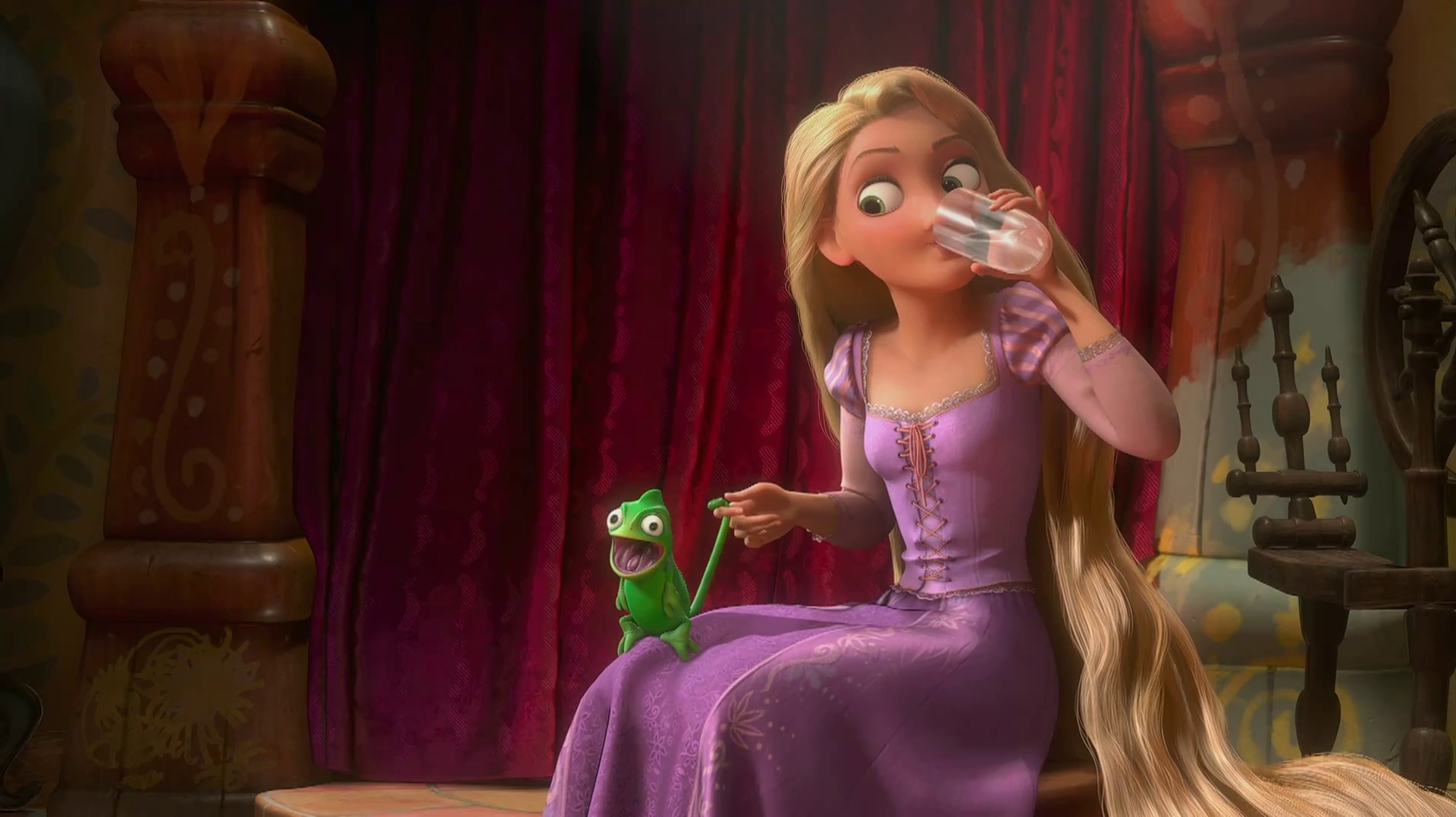I was interested in attending this lecture for at least three reasons: 1) I like Disney, 2) I'm interested in fabric, and 3) I am often bothered by clothing representation in animation. The talk was, of course, very technical, but I gleaned a few new nuggets of knowledge and newfound awe and respect for computer animators.
Disney does a great job of researching to understand how both inanimate and animate objects look and work in real life. (Animation doesn't always work in real life ways, but life study helps animation work in believable ways.) They not only make it their business to study their subject in real life, but they also study their subject from other references like art and videos. For instance when animating the movie Tangled, the animators studied clothing as painted by Leighton, Waterhouse, and Dicksee; they had bolts of fabric on hand that they could handle and manipulate; and they made films of themselves and models moving in order to understand the relationship between fabric, the body, and movement. And that's just for the animation of only the clothing in the movie. (Side note: A lot of Disney DVDs will have extras that include animators talking about this kind of research.)
 |
| Waterhouse |
 |
| Dicksee |
 |
| Leighton |
But here's the thing, a computer animator has to take so much into account that it is no wonder that they try to make things as simplified as possible. We're talking maths, physics, and computer science, people. McLaughlin used lots of phrases like mass/spring system, triangle meshes, constraint forces, new velocity, etc., to detail the considerations used in simulation animation. I think I understood some of it on very a basic level, like how gravity and the physical properties of the fabric have to be included in the simulation programming.
And after they get all that worked out for the model of the character, the game changes when the character actually moves and "collides" (comes in contact or in proximity) with other things. For instance, fabric simulation programming can become "stuck" to another bit of programming, which causes all sorts of wardrobe malfunctions or erratic movements in the fabric. (I may or may not have seen a bit of screwy animation that ended up being a Rapunzel crotch-shot as her skirts jumped and bunched up to her waist after sticking to some other programming.)
To prevent some of this type of sticking, they often program in a buffer (with cute names like "collision mittens") between the character and the object. In other words, after meshing and layering and programming so the character looks right, they have to program whole other layers to try and prevent the fabric simulation programming from interacting with other programming in undesirable ways while still reacting to the environment in desirable ways. And sometimes even that doesn't work, so they either have to animate things more rigidly (less realistically), or move things point by point to get them where they need to go, which takes much more time.
At some point I realized that this was just the problems that occurred in relation to the fabric alone, not to mention all the other aspects and pieces in the film. No wonder it takes YEARS to animate a movie. Animation is a patient job on a daily, weekly, monthly, and yearly level. From now on I will be more forgiving to the animators and to the look and movement of fabric in animation.
Maybe.

I've got to admit, I'm very interesting to see the fabric in the upcoming "Brave" movie now. Because Pixar has had limited use of fabric up until this point. And just look what they did with fur in Monsters Inc (not to mention all of their other amazing animation)! I don't doubt all this stuff about the challenges of fabric animation is true, but I'll bet Pixar can do it better!
ReplyDeleteHave you seen the latest preview (which is really just a clip)? Based on that it looks like they at least have better texture variation between fabrics, but it also looks like the dress bodices look a little morph suit-y. However all the hair looks AWESOME.
ReplyDeleteWow, that was really interesting! Thanks!
ReplyDeleteand re: Brave, sometimes I wish I had hair like that!
I'm glad you enjoyed it. And I feel you about the hair, but I sometimes with I sounded like Kelly MacDonald.
ReplyDelete